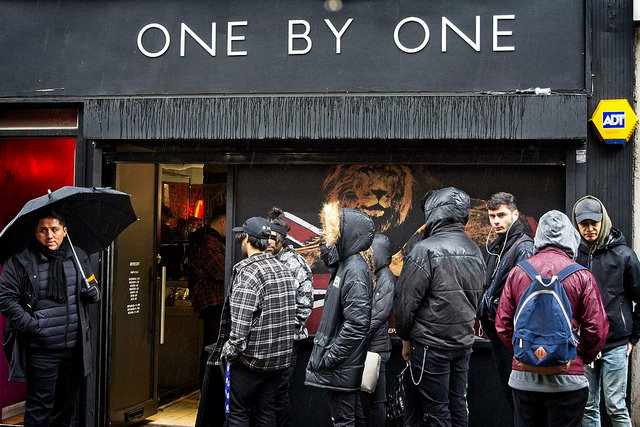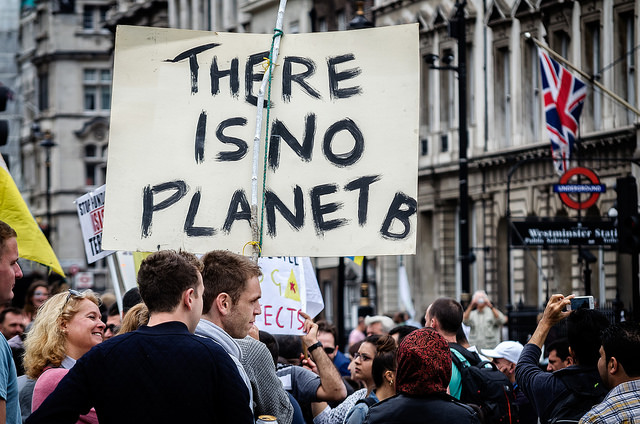Unlock the Magic in Your Story Now
Get the Free 20 questions to Ask Before Launching Your Idea workbook when you sign up for occasional updates.
Get the Free 20 questions to Ask Before Launching Your Idea workbook when you sign up for occasional updates.
Articles filed in: Storytelling
The Power Of Because
filed in Storytelling

Over several decades our traditional, mass marketing culture taught us that marketing and sales were about finding the angle. Marketing became about getting creative with the truth and being a master of spin. It doesn’t have to be this way. We can choose to do the kind of marketing we’re proud of. What if instead of trying to come up with an angle, we mastered truth-telling instead?
We can rediscover the truth about our value proposition by revisiting the reasons we originally showed up for these people at this time.
We made this because _______.
People need this because _______.
We do it this way because _______.
We want to appeal to this customer because _______.
This is the right thing to do because _______.
Our company exists because _______.
The truth is the most powerful sales and marketing strategy of all. We become better marketers by being honest with ourselves first and foremost.
Image by Garry Knight
The Feeling Customer
filed in Marketing, Storytelling, Strategy

One of the mistakes we make when we’re building a business and communicating our value is to only create for the thinking customer and his rational mind. Messages that resonate deeply connect with people’s feelings. Beloved brands and successful businesses appeal to their customers’ hearts, not just their heads. Wants and needs. Dreams and requirements. Desires and demands. Apple resonated by using design. Starbucks did it with rituals. Airbnb leveraged belonging.
We don’t just persuade people to act. We move them to act.
How are you serving wants as well as needs?
Image by Garry Knight
Three Things Your Audience Wants To Know
filed in Storytelling

When we’re trying to convince people to support our cause or buy our product we often double down on giving them information. Our false assumption is that if we can arm people with enough information to make a decision that they will be willing to act. But facts alone are not enough to persuade us to take action. Gifted communicators and powerful storytellers know that people need more than just convincing arguments and endless detail to help them decide.
The Three Things Your Audience Wants To Know
1. Can I trust the messenger?
2. Does the message make sense?
3. Do the message and the values of the messenger align with my values?
Persuasion is an art and a science. A compelling argument, communicated with emotion, by a source we trust and want to believe in.
Image by Garry Knight
Missed
filed in Storytelling, Success
 If Jason suddenly stopped coaching at our local gym, we would miss how he tries to get the best from everyone, even when we don’t feel like getting the best from ourselves. Plenty of people would miss the energy James and his team create at KereKere cafe, their warm welcome and the intention behind everything they do.
If Jason suddenly stopped coaching at our local gym, we would miss how he tries to get the best from everyone, even when we don’t feel like getting the best from ourselves. Plenty of people would miss the energy James and his team create at KereKere cafe, their warm welcome and the intention behind everything they do.
Commutes would be a lot duller if Bruce stopped driving his tram tomorrow. We would miss being able to pop out to buy fresh organic vegetables on a Sunday if Maggie’s closed and the smell of baking bread every morning at Fatto A Mano if they stopped opening their doors.
No day would be the same without the wisdom of Seth’s blog. No week complete without the joy of Tina’s Friday linkpack. If the internet went down, I would miss the inspiration of the members of the Right Company and the readers of my blog, including you.
The world would be better for our being here if we started every day with the intention of being missed tomorrow.
Image by Garry Knight
Seeing And Hearing Vs. Being Seen And Heard
filed in Marketing, Storytelling, Strategy

As children, we know that understanding what motivates our audience is the shortcut to getting attention. We seem to unlearn this ability to be empathetic communicators when being seen and heard becomes our main driver.
We have a better chance of being heard when we understand what the people we’re speaking to are open to hearing. We do that by asking ourselves better questions.
Four Important Messaging Questions
1. Who is this information for?
2. What do we want them to know?
3. Why do they need to know this?
4. What do we want them to do next?
Communication isn’t only about finding the right words.
It’s about finding the right reason to say them.
Image by Garry Knight
What Are You Promising?
filed in Marketing, Storytelling, Strategy
 Products and services are promises. A promise from the brand to the customer. The word of the maker given to the user. A commitment from the seller to the buyer. Sellers promise that things are fresh and safe, worthy and working—that they will meet spec and sometimes even delight.
Products and services are promises. A promise from the brand to the customer. The word of the maker given to the user. A commitment from the seller to the buyer. Sellers promise that things are fresh and safe, worthy and working—that they will meet spec and sometimes even delight.
Whenever we make or sell something, we’re making a promise, and the customer is paying for a change that happens as a result of that promise.
Successful businesses are built by being clear about and aligning brand promises and customer expectations. What are you promising and what change is your customer expecting?
Image by Garry Knight
What Could You Leave Unsaid?
filed in Marketing, Storytelling, Strategy
 When I was in high school, the geography syllabus required us to study South America for a whole year. One of our teachers who had a special interest in South America decided to make it her business to teach us everything she knew about the continent. Everything. No stone was left unturned, no river basin unexplored, no coastal plain unexamined. Two things were achieved by the end of the year. We could rattle off the capital cities and the length of the rivers, but we had lost all interest in knowing anything more about South America.
When I was in high school, the geography syllabus required us to study South America for a whole year. One of our teachers who had a special interest in South America decided to make it her business to teach us everything she knew about the continent. Everything. No stone was left unturned, no river basin unexplored, no coastal plain unexamined. Two things were achieved by the end of the year. We could rattle off the capital cities and the length of the rivers, but we had lost all interest in knowing anything more about South America.
The best teachers didn’t try to teach us all of the facts. They piqued our curiosity enough to make us interested in discovering more for ourselves.
And so it goes for our marketing messages. Our job isn’t to tell customers everything all at once. It’s to make them curious to learn more. The best marketers, like the best teachers, know how much information is enough and what to leave unsaid.
Image by Bill Dickinson
What Do You Want To Be Known For?
filed in Marketing, Storytelling, Strategy
 The food cart outside the gallery was in the perfect spot to attract the attention of hungry tourists. Judging by the two choices listed on the menu that’s exactly what the owner was thinking too.
The food cart outside the gallery was in the perfect spot to attract the attention of hungry tourists. Judging by the two choices listed on the menu that’s exactly what the owner was thinking too.
Now serving
Custard Tarts
Kale Soup
Differentiation starts with the choice to do one thing well.
Hedging your bets feels safer than putting a stake in the ground.
But it’s rarely a good branding strategy.
When you stand for something, people know. What do you want to be known for?
Image by Kent Kanouse
Reach Is Overrated
filed in Marketing, Storytelling, Strategy
 Kate Reid wasn’t expecting people to drive across town to wait in long lines when she first started rolling croissants in her tiny Elwood bakery. She wasn’t making pastries for everyone—just for the kind of people who believed and valued what she believes. Everything could have changed when she moved to her-state-of-the-art bakery in Fitzroy. But Kate built Lune for resonance, not reach. The success of her second store, which opens in the city next week, will be not be dependent on convincing most people to come. Kate’s croissants are not for everyone.
Kate Reid wasn’t expecting people to drive across town to wait in long lines when she first started rolling croissants in her tiny Elwood bakery. She wasn’t making pastries for everyone—just for the kind of people who believed and valued what she believes. Everything could have changed when she moved to her-state-of-the-art bakery in Fitzroy. But Kate built Lune for resonance, not reach. The success of her second store, which opens in the city next week, will be not be dependent on convincing most people to come. Kate’s croissants are not for everyone.
Many of the ideas we have grown up with only succeeded at scale. In the past businesses talked about cornering the market as if there was only one market. When production and marketing costs were prohibitive, that market had to be most people. While many businesses need millions of customers to thrive, most businesses don’t. And yet we still market as if we’re trying to reach every single person who happens to be passing by.
Reach does not always result in resonance. Resonance is what you’re aiming for.
You don’t need everyone. You just need the right people.
Who are your right people? Are you marketing to everyone or just to them?
Image by Andrew Xu
The Obvious Advantage
filed in Storytelling, Strategy
 The owner of our local organic store has built a thriving business. It’s the go-to place for people from the suburb who are happy to invest in a story about the benefits of eating well. He’s recently opened a new store in another suburb but hasn’t been able to replicate the success of the first. One of the sales assistants I spoke to has a theory about why the second branch isn’t doing so well. It all comes down to the story people believe before they set foot in the store.
The owner of our local organic store has built a thriving business. It’s the go-to place for people from the suburb who are happy to invest in a story about the benefits of eating well. He’s recently opened a new store in another suburb but hasn’t been able to replicate the success of the first. One of the sales assistants I spoke to has a theory about why the second branch isn’t doing so well. It all comes down to the story people believe before they set foot in the store.
It’s obvious from the street that store one sells health food and sustainable products. Everything from the location, signage and ambience gives a prospective customer clues about what to expect when they get inside. The second branch is bigger than the first. It has a cafe located at the front. The interior design is sparse and industrial. The products aren’t visible until you’re deep inside. It looks and feels just like any other grocery store and cafe. The result is that people are confused about what the place is and who it’s for.
If we build it, they will come—but only if we’re explicit about who it’s for and why it’s for them.
Image by Sascha Kohlmann